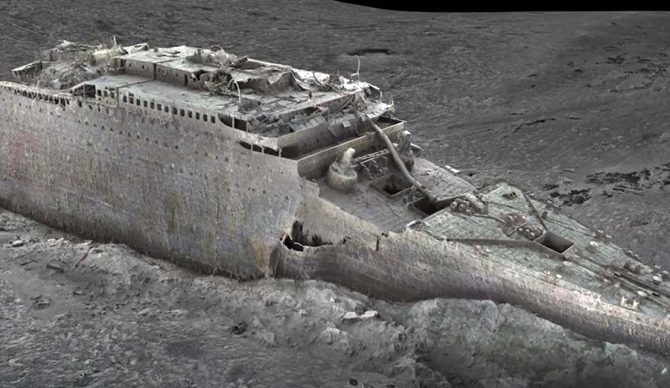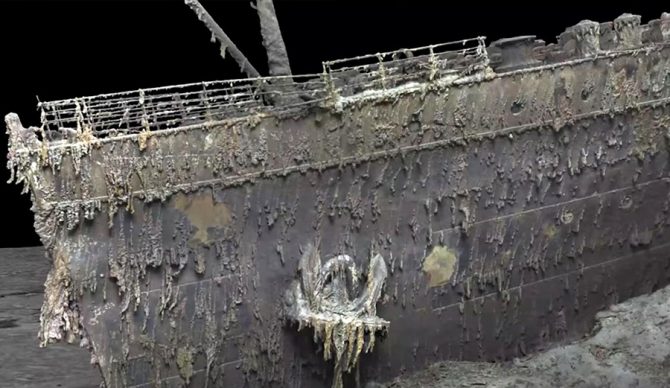
A 3D image of the Titanic stitched together from thousands of photos taken by submersibles in 2022. Photo: Screenshot//Magellan
You’d be forgiven for thinking — as I did — that the Titanic’s story is sufficiently well known 111 years after its infamous demise. Yet it only takes a glance at the digital images released this week to see the shipwreck as no one has seen it before.
For the first time, the ship’s entire hull is visible in its resting place 3,800 meters below the surface of the Atlantic Ocean. Thanks to 200 hours of work from the mapping company Magellan, the wreck appears as a decaying skeleton in the pitch-black desert of the deep sea.
Even for longtime students of the Titanic’s history, the images felt extraordinary. Parks Stephenson, who has studied the Titanic for many years, told the BBC he was “blown away” when he first laid eyes on the scans.
“It allows you to see the wreck as you can never see it from a submersible, and you can see the wreck in its entirety, you can see it in context and perspective,” Stephenson said. “And what it’s showing you now is the true state of the wreck.”
700,000 images stitched together
Many Titanic enthusiasts will be familiar with the closeup, slow-moving videos taken from submersibles, especially from James Cameron’s documentaries.
Now, thanks to 700,000 images pieced together into a 3D reconstruction, the whole world can see the Titanic from a wider perspective.
Even for those not obsessed with the ship’s history, the story retains a profound sense of tragedy.

Though the wreck is remarkably well-preserved, it’s clear microbes are eating away at the ship’s hull. Image: Screenshot//Magellan
Some mysteries remain
More than 1,500 people died when the Titanic struck an iceberg during its maiden voyage in 1912. More than 100 years later, evidence of their lives still exists in the personal objects scattered throughout the massive debris field around the wreck. Those include dozens of shoes resting on the sediment, unopened champagne bottles, and ornate metalwork broken off the ship.
Researchers hope the images can help with unanswered questions about exactly what happened to the liner on that terrible night in 1912.
“There are still questions, basic questions, that need to be answered about the ship,” Stephenson, a Titanic analyst, told BBC News.
“We really don’t understand the character of the collision with the iceberg. We don’t even know if she hit it along the starboard side, as is shown in all the movies – she might have grounded on the iceberg,” he said.
Stay tuned: Atlantic Productions, which partnered with Magellan, will make a documentary about the project.
This article was originally published on ExplorersWeb.

